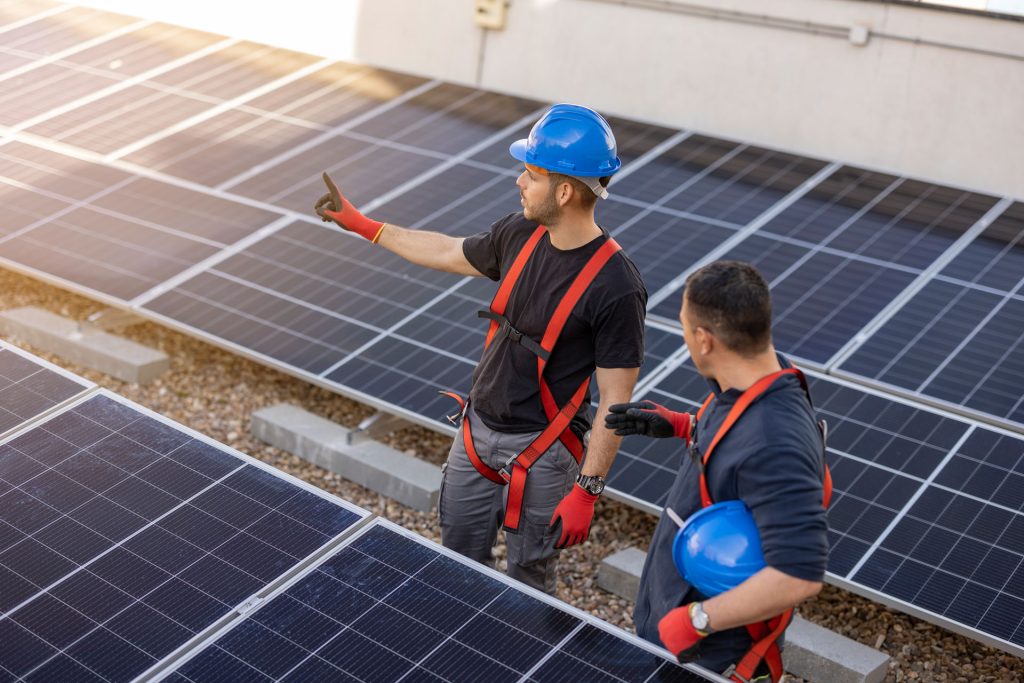The Importance of Energy Efficiency in a Full Home Remodel
A full home remodel offers a unique opportunity to not only update the aesthetic and functionality of your space but also enhance its energy efficiency. Incorporating energy-efficient features into your renovation plan can lead to significant cost savings, increased comfort, and a reduced environmental footprint. By taking a thoughtful approach to materials, design, and technology, homeowners can create a living space that is both eco-friendly and economical. We will explore how energy efficiency can be integrated into a remodel and why it is essential for modern living, focusing on key areas like insulation, appliances, and lighting.
Enhancing Energy Efficiency Through Improved Insulation
One of the most critical aspects of an energy-efficient home remodel is upgrading insulation. Proper insulation acts as a barrier, keeping indoor temperatures stable and reducing the workload on heating and cooling systems. Many older homes are under-insulated, leading to energy loss and higher utility bills. Modern insulation materials, such as spray foam, cellulose, or rigid foam boards, provide excellent thermal resistance, ensuring your home remains comfortable year-round.
When planning your remodel through Spartan Projects LLC of Plano, consider areas requiring improved insulation, such as walls, attics, basements, and crawl spaces. If not adequately insulated, these areas can contribute significantly to heat loss. Additionally, sealing gaps and cracks around windows, doors, and vents can enhance your home’s overall energy performance. Investing in high-quality insulation and addressing air leaks can reduce energy consumption, lower costs, and contribute to a more sustainable future.
Upgrading to Energy-Efficient Windows and Doors
Windows and doors are another critical focus for achieving energy efficiency in a remodel. Traditional windows and doors can be significant sources of energy loss, allowing drafts and heat transfer that compromise your home’s comfort and efficiency. Modern, energy-efficient windows and doors use advanced materials, such as double or triple glazing, low-emissivity coatings, and gas-filled panes, to minimize heat transfer and maintain a stable indoor climate.
When selecting windows and doors for your remodel, consider their energy performance ratings, such as the U-factor and solar heat gain coefficient (SHGC). These measurements indicate how well a product insulates and resists heat gain. In addition to choosing energy-efficient products, proper installation is essential to ensure a tight seal and optimal performance. Upgrading your windows and doors allows you to enjoy a brighter, more comfortable home while significantly reducing your energy bills and carbon footprint.
Modernizing with Energy-Saving Appliances and Systems
A full home remodel is the perfect time to replace outdated appliances and systems with energy-saving alternatives. Appliances like refrigerators, dishwashers, and washing machines have seen significant advancements in energy efficiency over the past decade, making them smarter and more cost-effective. Look for products certified by programs such as ENERGY STAR, which meet stringent energy-saving criteria without compromising performance.
In addition to appliances, consider updating your home’s heating, ventilation, and air conditioning (HVAC) system to a more efficient model. High-efficiency furnaces, heat pumps, and air conditioners use advanced technology to provide comfort while consuming less energy. Smart thermostats can enhance efficiency by learning your schedule and optimizing temperature settings. Investing in these systems during your remodel improves your home’s energy profile and ensures long-term savings and comfort.
The Role of Lighting in Energy Efficiency
Lighting is a simple yet impactful area to address in an energy-efficient remodel. Traditional incandescent bulbs consume more energy and have shorter lifespans than modern alternatives like LED or CFL bulbs. By transitioning to energy-efficient lighting, you can reduce electricity use and maintenance costs while enjoying better light quality.
Consider integrating smart lighting systems that allow you to control brightness and schedules remotely. These systems can help optimize energy use by ensuring lights are only on when needed. Additionally, natural lighting plays a crucial role in energy efficiency. Incorporating skylights, larger windows, or light tubes can reduce the need for artificial lighting during the day, enhancing both efficiency and aesthetics. Thoughtful lighting upgrades during your remodel can make a noticeable difference in your energy bills and the ambiance of your home.
See more : Best Lattice Panels to Add in 2025
Sustainable Materials for Energy-Efficient Remodels
Choosing materials in a remodel can significantly impact energy efficiency and sustainability. Opting for eco-friendly materials like reclaimed wood, bamboo, and recycled metal reduces environmental impact and improves energy performance. Many sustainable materials have excellent insulating properties, enhancing your home’s energy profile.
For flooring, consider options like cork or concrete with radiant heating, which can provide warmth and comfort while reducing energy use. Similarly, energy-efficient roofing materials, such as cool roofs or solar-reflective shingles, can help maintain indoor temperatures and reduce cooling costs. Incorporating sustainable materials into your remodel supports a greener lifestyle while ensuring long-lasting durability and efficiency.
The Impact of Renewable Energy Solutions
Renewable energy solutions, such as solar panels or geothermal systems, are transformative additions to an energy-efficient remodel. Solar panels can harness the sun’s energy to power your home, significantly reducing reliance on conventional electricity sources. Advances in solar technology have made these systems more accessible and cost-effective, with many homeowners experiencing a return on investment within a few years.
On the other hand, geothermal systems utilize stable temperatures underground to provide efficient heating and cooling. While the initial installation costs can be higher, the long-term savings and environmental benefits make these systems attractive. Incorporating renewable energy solutions into your remodel demonstrates a commitment to sustainability while providing energy independence and cost savings.
A full home remodel provides an ideal opportunity to prioritize energy efficiency, creating a functional and environmentally conscious space. Homeowners can enjoy significant cost savings, enhanced comfort, and a reduced carbon footprint by focusing on areas such as insulation, windows, appliances, lighting, and renewable energy. Energy-efficient choices contribute not only to personal benefits but also to broader environmental sustainability. As we reimagine our homes, incorporating energy efficiency into the design and execution ensures a future-ready living space that aligns with the needs of modern lifestyles and a greener planet.

